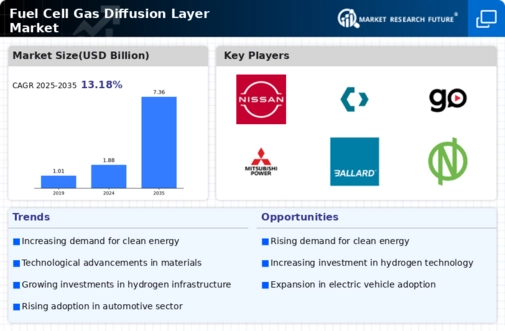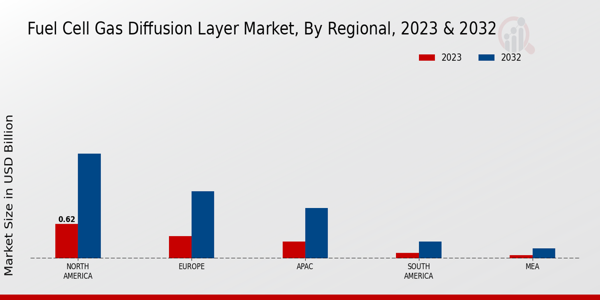The Fuel Cell Gas Diffusion Layer Market has witnessed considerable growth and transformation due to increasing demand for clean energy solutions and advancements in fuel cell technologies. A competitive analysis of this market reveals various players aiming to capture market share through innovation, technological advancements, and strategic partnerships. Key factors influencing competition include research and development initiatives to enhance the performance of gas diffusion layers, efficient manufacturing processes, and the ability to offer cost-effective solutions.
The market is characterized by the presence of established companies alongside new entrants, all striving to optimize their offerings in response to the evolving needs of the automotive and energy sectors.
The competitive landscape is further shaped by the push for sustainability, with companies leveraging eco-friendly materials and processes to gain consumer trust and satisfy regulatory requirements.3M has established a strong market presence in the Fuel Cell Gas Diffusion Layer Market, known for its commitment to innovation and excellence in engineering. The company’s extensive portfolio includes advanced materials that significantly enhance the performance and durability of gas diffusion layers. 3M's well-established research and development capabilities allow it to continuously improve its products, keeping pace with the demands of fuel cell applications.
This strategic focus on innovation, coupled with a strong emphasis on quality assurance and regulatory compliance, positions 3M as a leader in the market. The company’s global manufacturing footprint ensures timely delivery and responsiveness to market needs, further solidifying its competitive edge. Additionally, 3M’s collaborative approach with partners in the automotive and energy sectors fosters the development of cutting-edge technologies that contribute to the advancement of fuel cell solutions.
Nissan, while primarily recognized as an automotive manufacturer, has made significant strides in the Fuel Cell Gas Diffusion Layer Market by integrating fuel cell technology into its vehicles. The company's investment in research and development has enabled it to explore innovative applications of gas diffusion layers that improve fuel cell efficiency and reliability. Nissan's commitment to sustainability and reducing carbon emissions aligns with its strategy to implement fuel cell technologies in the transportation sector. This dedication extends to the exploration of diverse markets and collaborations to further enhance the viability of fuel cell vehicles.
Nissan’s proactive approach to adopting advanced fuel cell technology showcases its intent to become a major player in the market. By leveraging its automotive expertise and focusing on the development of high-performance gas diffusion layers, Nissan is positioned to make significant contributions to the growth and evolution of the Fuel Cell Gas Diffusion Layer Market.












